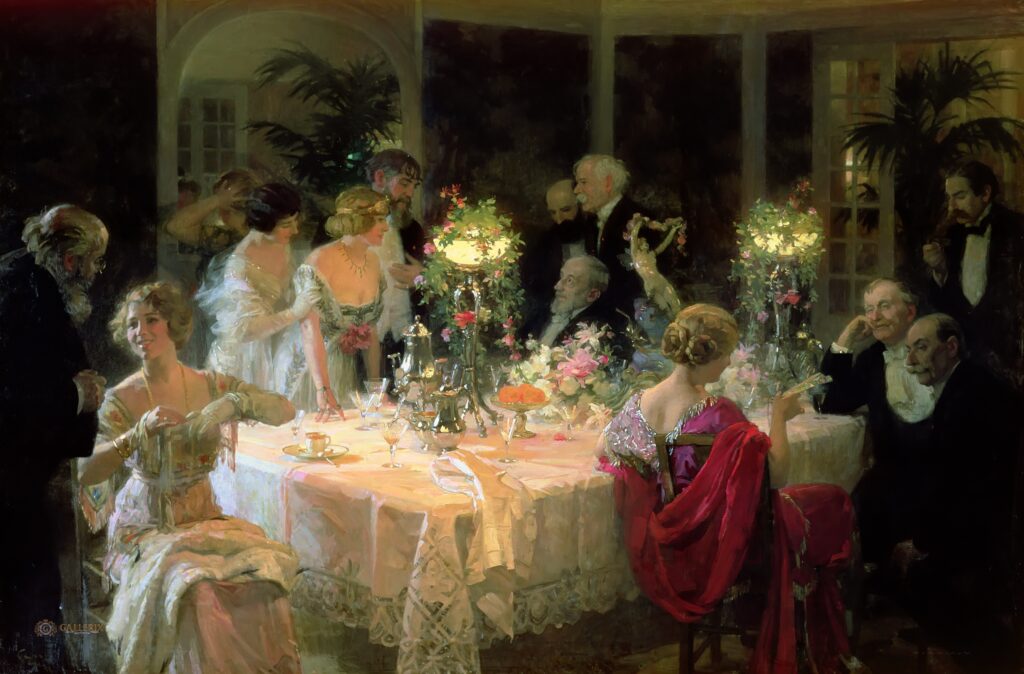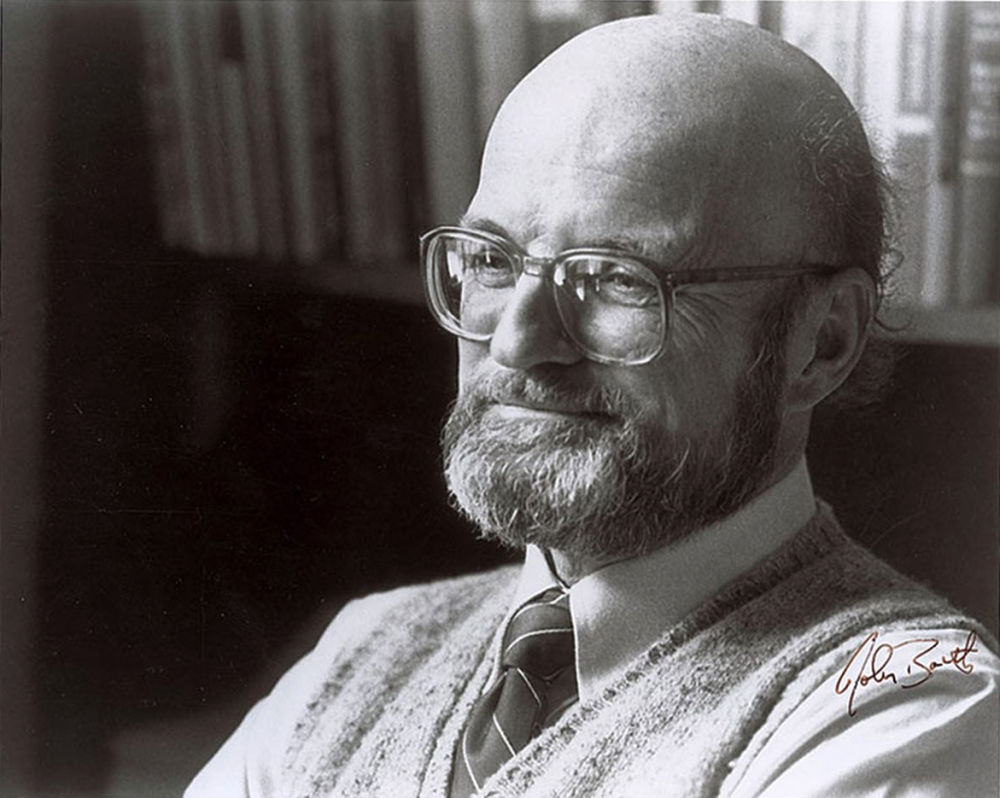Although he is not well-known outside his native Australia, Gerald Murnane has proven, over four decades and some dozen books, to be one of that country’s most original and distinctive writers. According to Murnane, his recently completed work of fiction, Border Districts, will be his last. These are its opening pages.
Two months ago, when I first arrived in this township just short of the border, I resolved to guard my eyes, and I could not think of going on with this piece of writing unless I were to explain how I came by that odd expression.
I got some of my schooling from a certain order of religious brothers, a band of men who dressed each in a black soutane with a bib of white celluloid at his throat. I learned by chance last year, and fifty years since I last saw anyone wearing such a thing, that the white bib was called a rabat and was a symbol of chastity. Among the few books that I brought here from the capital city is a large dictionary, but the word rabat is not listed in it. The word may well be French, given that the order of brothers was founded in France. In this remote district, I am even less inclined than I was in the suburbs of the capital city to seek out some or another obscure fact; here, near the border, I am even more inclined than of old to accept as well-founded any supposition likely to complete a pattern in my mind and then to go on writing until I learn the meaning for me of such an image as that of the white patch which appeared just now against a black ground at the edge of my mind and will not be easily dislodged.
The school where the brothers taught was built in the grounds of what had been a two-story mansion of yellow sandstone in a street lined with plane trees in an inner eastern suburb of the capital city. The mansion itself had been converted into the brothers’ residence. On the ground floor of the former mansion, one of the rooms overlooking the return veranda was the chapel, which was used by the brothers for their daily Mass and prayers but was available also to us, their students.
In the language of that place and time, a student who called at the chapel for a few minutes was said to be paying a visit. The object of his visitation was said to be Jesus in the Blessed Sacrament or, more commonly, the Blessed Sacrament. We boys were urged by teachers and priests to pay frequent visits to the Blessed Sacrament. It was implied that the personage denoted by that phrase would feel aggrieved or lonely if visitors were lacking. My class once heard from a religious brother one of a sort of story that was often told in order to promote our religious zeal. A non-Catholic of goodwill had asked a priest to explain the teachings of the Church in the matter of the Blessed Sacrament. The priest then explained how every disk of consecrated bread in every tabernacle in every Catholic church or chapel, even though it appeared to be mere bread, was in substance the body of Jesus Christ, the Second Person of the Blessed Trinity. The inquirer of goodwill then declared that if only he were able to believe this, he would spend every free moment in some or another Catholic church or chapel, in the presence of the divine manifestation.
In our school magazine every year, in his annual report to parents, our principal wrote at length about what he called the religious formation of us boys. In every classroom, the first period of every day was given over to Christian Doctrine, or religion, as we more often called it. Students recited aloud together a short prayer before every period of the daily timetable. I believed that most of my classmates took their religion seriously, but I seldom heard any boy make any mention, outside the classroom, of anything to do with that religion. The chapel was out of sight of the playground, and so I was never aware of how many of my classmates paid visits there. However, I went through several periods of religious fervor during my school days, and during each such period I paid several visits daily to the Blessed Sacrament. Sometimes I saw one or another of my classmates in the chapel, kneeling as I knelt with head bowed or eyes fixed on the locked tabernacle, within which, and out of our sight, was the gold-plated ciborium filled with the white wafers that we thought of as the Blessed Sacrament. I was never satisfied with my attempts to pray or to contemplate, and I often wondered what exactly was taking place in the mind of my devout-seeming classmate. I would have liked to ask him what he seemed to see while he prayed; how he envisaged the divine or canonized personages that he addressed in his mind, and much else. Sometimes, by chance, a classmate and I would leave the chapel at the same time and would walk together along the return veranda and then through the brothers’ garden towards the playground, but for me to have questioned the boy then about his devotions would have been hardly less disturbing than if I had made him an indecent proposition.
In the quiet street where I now live is a tiny church that I pass every weekday morning on my walk to the shops and the post office. The church belongs to one of the Protestant denominations that I pitied as a schoolboy on account of the drabness of their services, which consisted, I supposed, of mere hymns and sermons and none of the splendid rituals enacted in my own church. Whenever I pass, the grass around my neighborhood church is always neatly mown but the church itself is closed and deserted. I must have passed countless Protestant churches in suburbs or in country towns and scarcely glanced at them, and yet I can never pass the nearby church without my thoughts being led in surprising directions.
I have always believed myself to be indifferent to architecture. I hardly know what a gable is or a nave or a vault or a vestry. I would describe my neighborhood church as a symmetrical building comprising three parts: a porch, a main part, and, at the furthest end from the street, a third part surely reserved for the minister before and after services. The walls are of stone painted—or is the correct term rendered?—a uniform creamy white. I am so unobservant of such details that I cannot recall, here at my desk, whether the pitched roofs of the porch and the main part are of slate or of steel. The rear part has an almost flat steel roof. The windows aren’t of much interest to me, except for the two rectangular windows of clear glass, each with a drawn blind behind it, in the rear wall of the minister’s room. The main part of the church has six small windows, three on each side. The glass in each of these windows is translucent. If I could inspect it from close at hand, the glass might well seem no different from the sort that I learned to call as a child frosted and saw often in bathroom windows. The glass in the six windows is by no means colorless, but I have not yet identified the shade or tint that distinguishes it. On some mornings when I pass, the glass in question seems an unexceptional gray green or, perhaps, gray blue. Once, however, when I happened to pass the church in the late afternoon, and when I looked over my shoulder at a window on the shaded, southeastern side of the building, I saw the glass there colored not directly by the setting sun but by a light that I was prevented from seeing: the glow within the locked church where the rays from the west had already been modified by the three windows on the side further from me. Even if I could have devised a name for the wavering richness that I saw then in that simple pane, I would have had to set about devising soon afterwards a different name for the subtly different tint in each of its two neighboring panes, where the already muted light from one and the same sunset had been separately refracted. The porch has one window, which looks towards the street. This is the window that mostly takes my notice as I pass and may well have been the cause of my setting out to write these pages. The glass in this window is what I have always called stained glass and almost certainly comprises a representation of something—a pattern of leaves and stems and petals perhaps. I prefer not to draw attention to myself when I walk in the township, and I have not yet been bold enough to stop and stare at the porch window. I am unsure not only of what is depicted there but even of the colors of the different zones of glass, although I suppose they are red and green and yellow and blue or most of those. The outer door of the church is always closed when I pass, and the door from the porch to the church is surely also closed. Since the tinted window faces northeast, the near side of the glass is always in bright daylight while the far side is opposed only to the subdued light of the enclosed porch. Anyone looking from my well-lit vantage point can only guess at the colors of the glass and the details of what they depict.
Perhaps thirty years ago, I read a review of a scholarly book in which part of the text comprised extracts from diaries kept by several men who traveled throughout England during the years of the Commonwealth smashing stained-glass windows. The men stood on ladders and used staves or axes to smash the glass. They reported in their diaries the names of each church that they visited and the numbers of windows that they smashed. They declared often in the diaries that they were doing the work of the Lord or promoting His glory. I have never traveled more than a day’s journey by road or rail from my birthplace. Foreign countries exist for me as mental images, some of them vivid and detailed and many of them having originated while I was reading works of fiction. My image of England is of a mostly green topographical map, richly detailed but comparatively small for an image-country. While I was reading the review of the book mentioned, I wondered how any stained-glass windows could have been left in the country after the men mentioned had done their widespread work. I wondered, too, what had become of all the smashed glass. I supposed the men had attacked the windows from the outside—had rammed their staves and axes against the dull-seeming glass without knowing what it represented or even what were its colors as seen from the other side. For how long were the colored chunks and shards left to lie in the aisles and on the pews? Were the smashed pieces gathered up by the dismayed congregation and hidden against a time when they could be melted or otherwise turned again into images of revered personages in otherworldly settings? Did children carry off handfuls of many-colored chips and afterwards squint through them at trees or sky or try to arrange them as they had formerly been or to guess whether this or that fragment had once represented part of a trailing robe, a radiant halo, an enraptured countenance?




